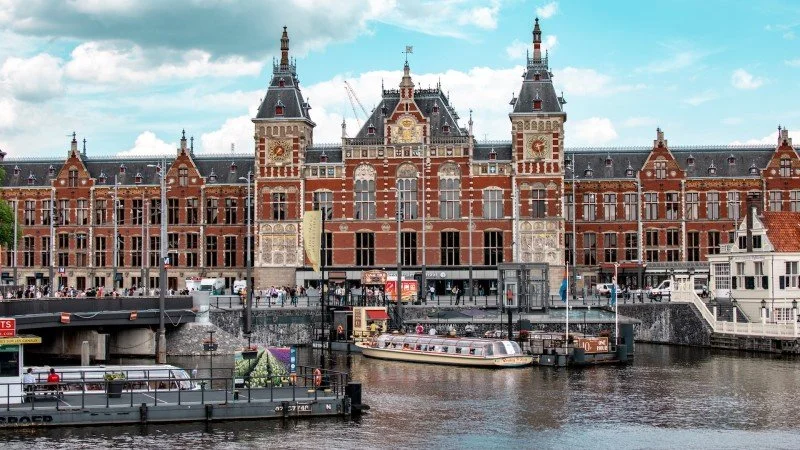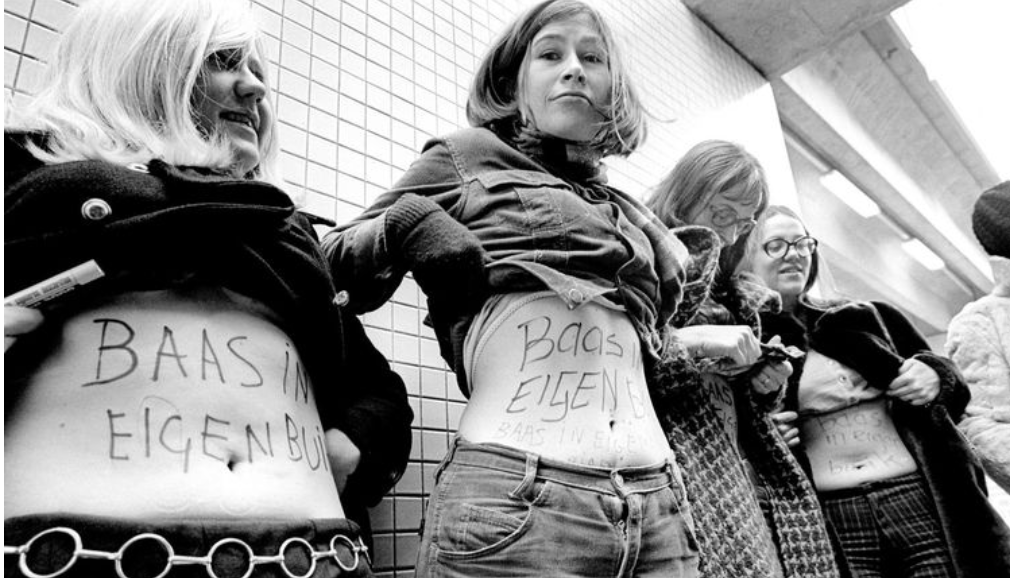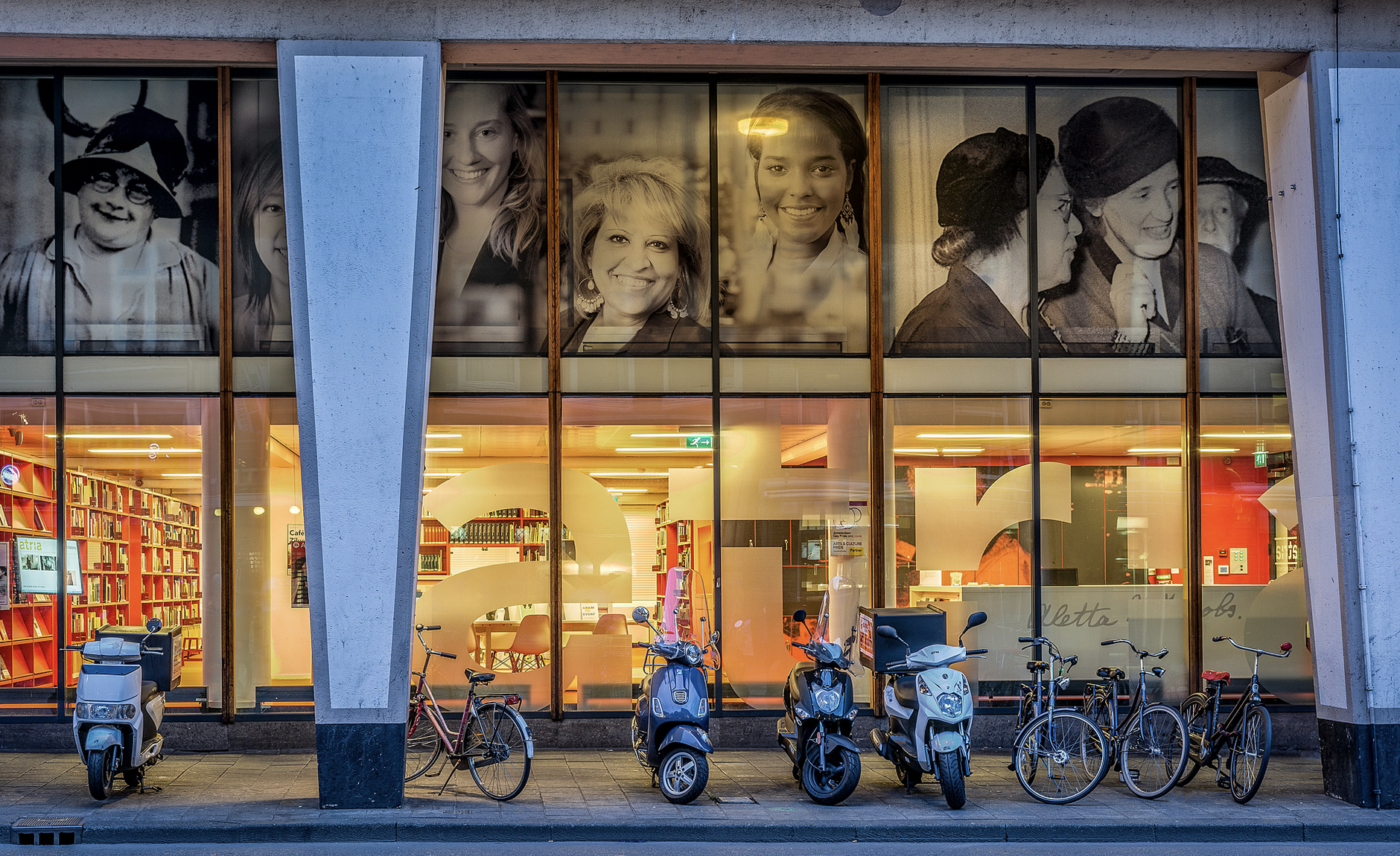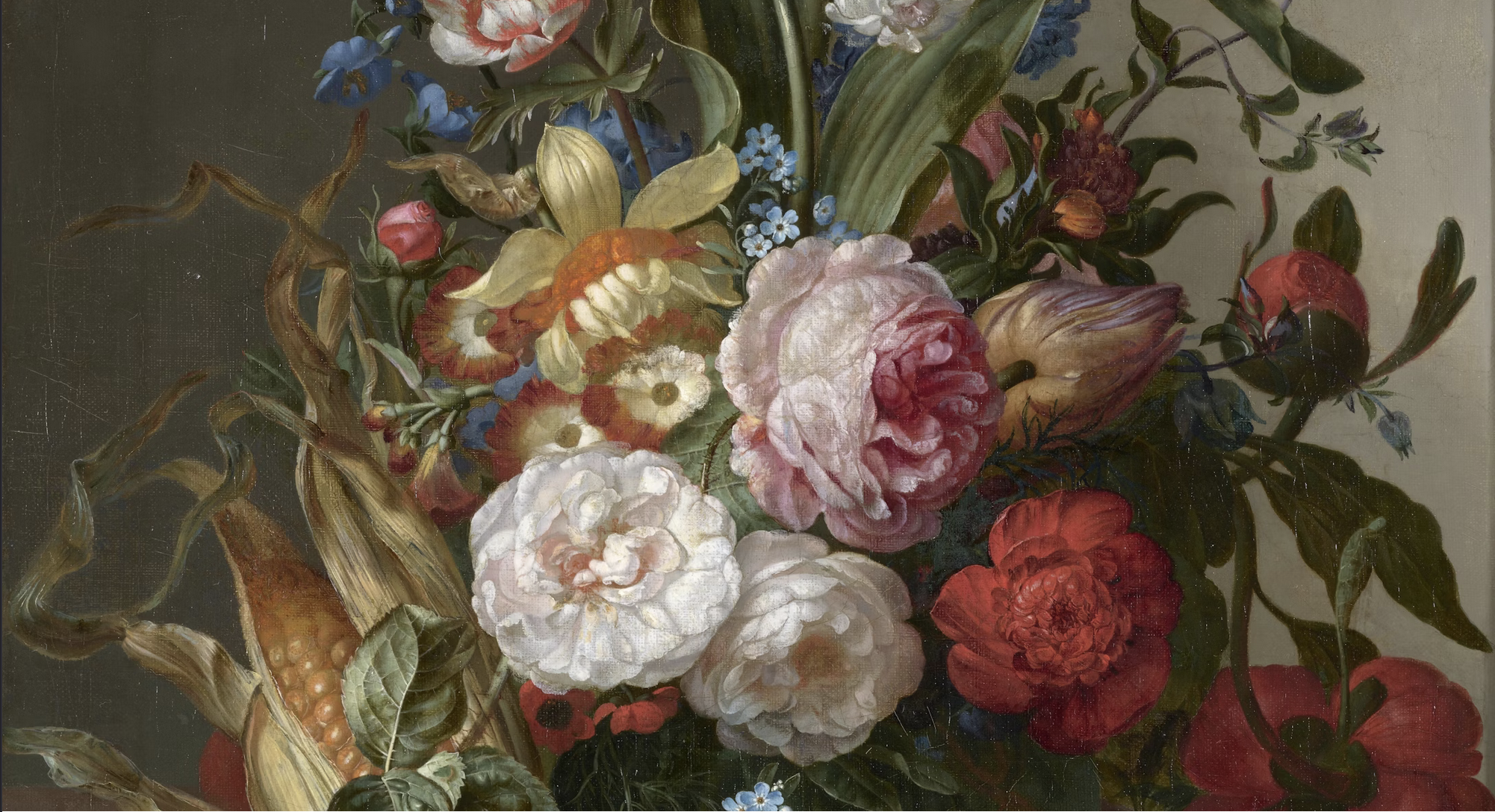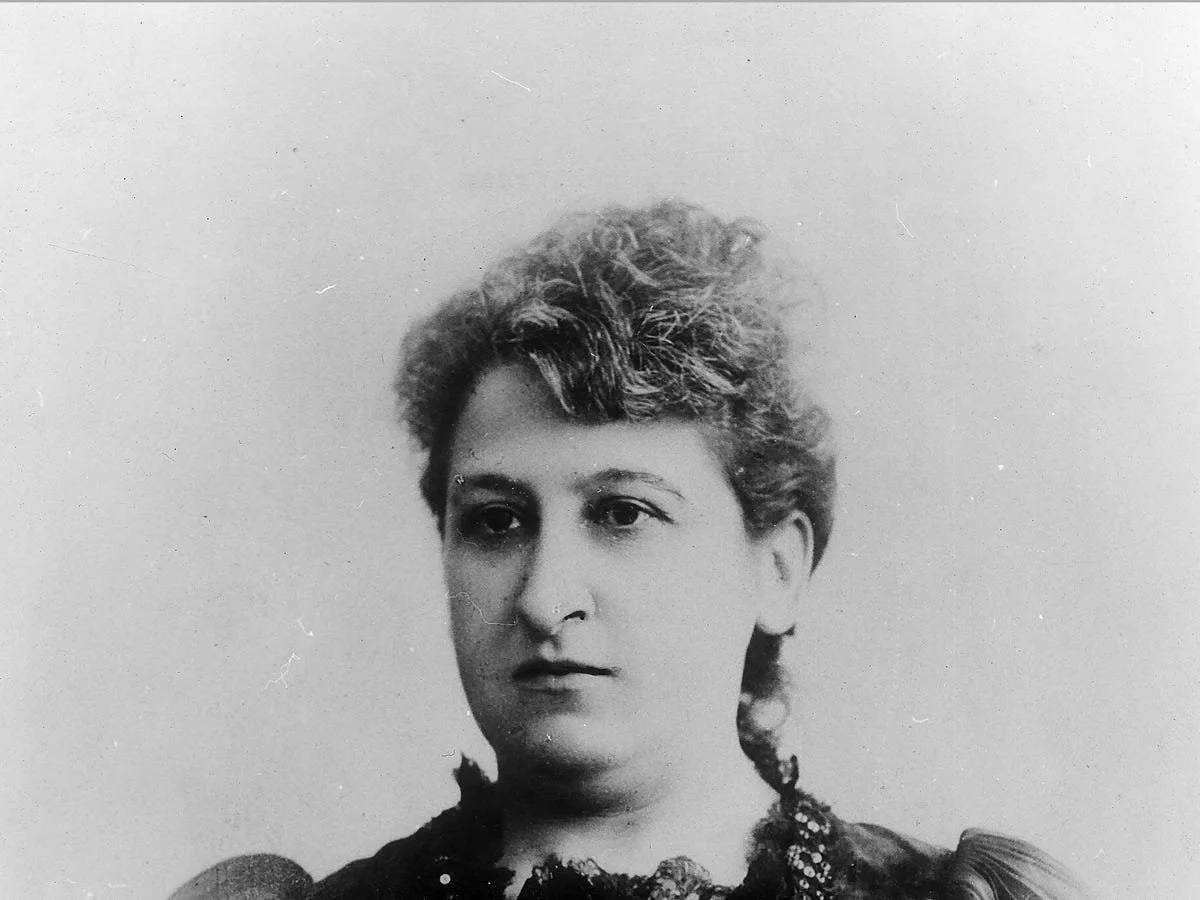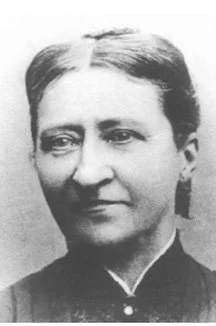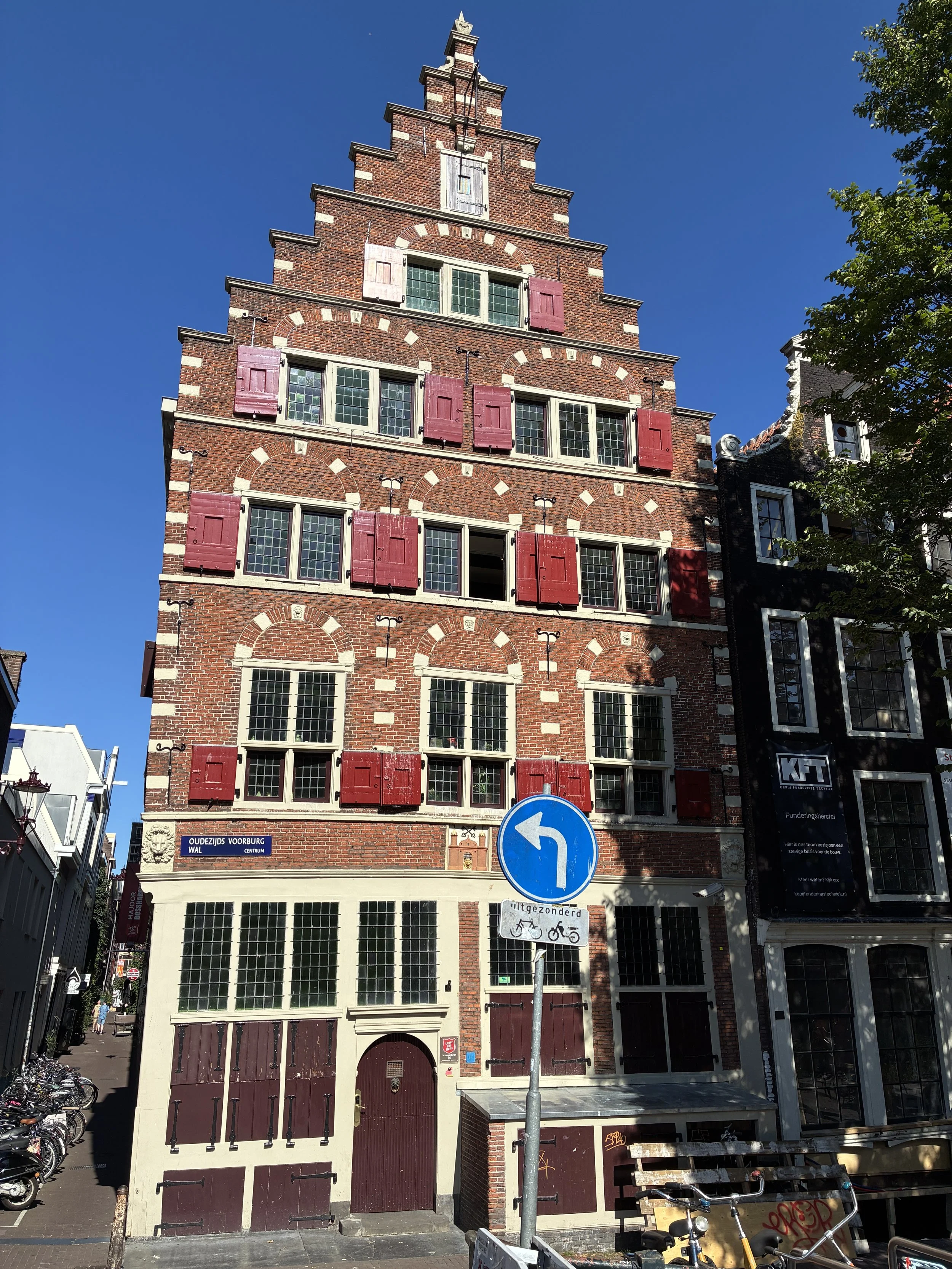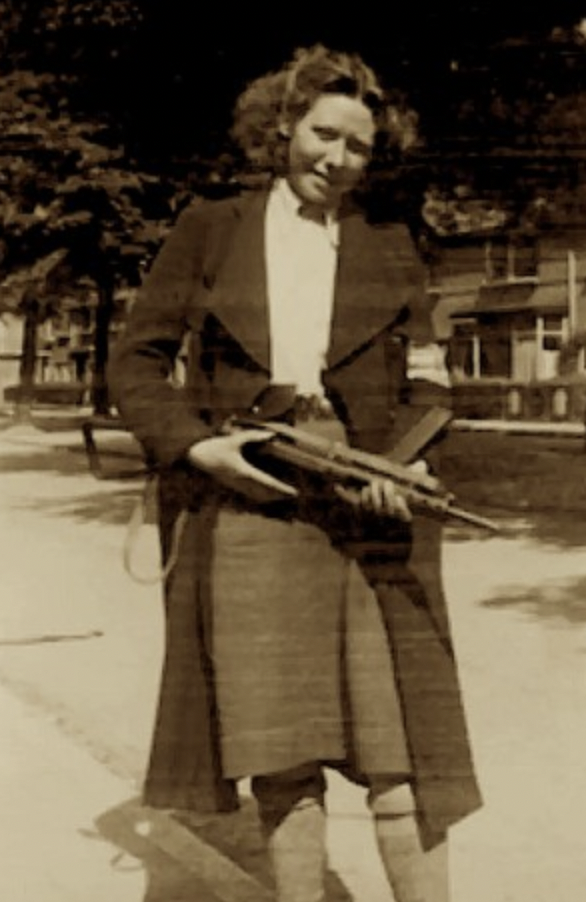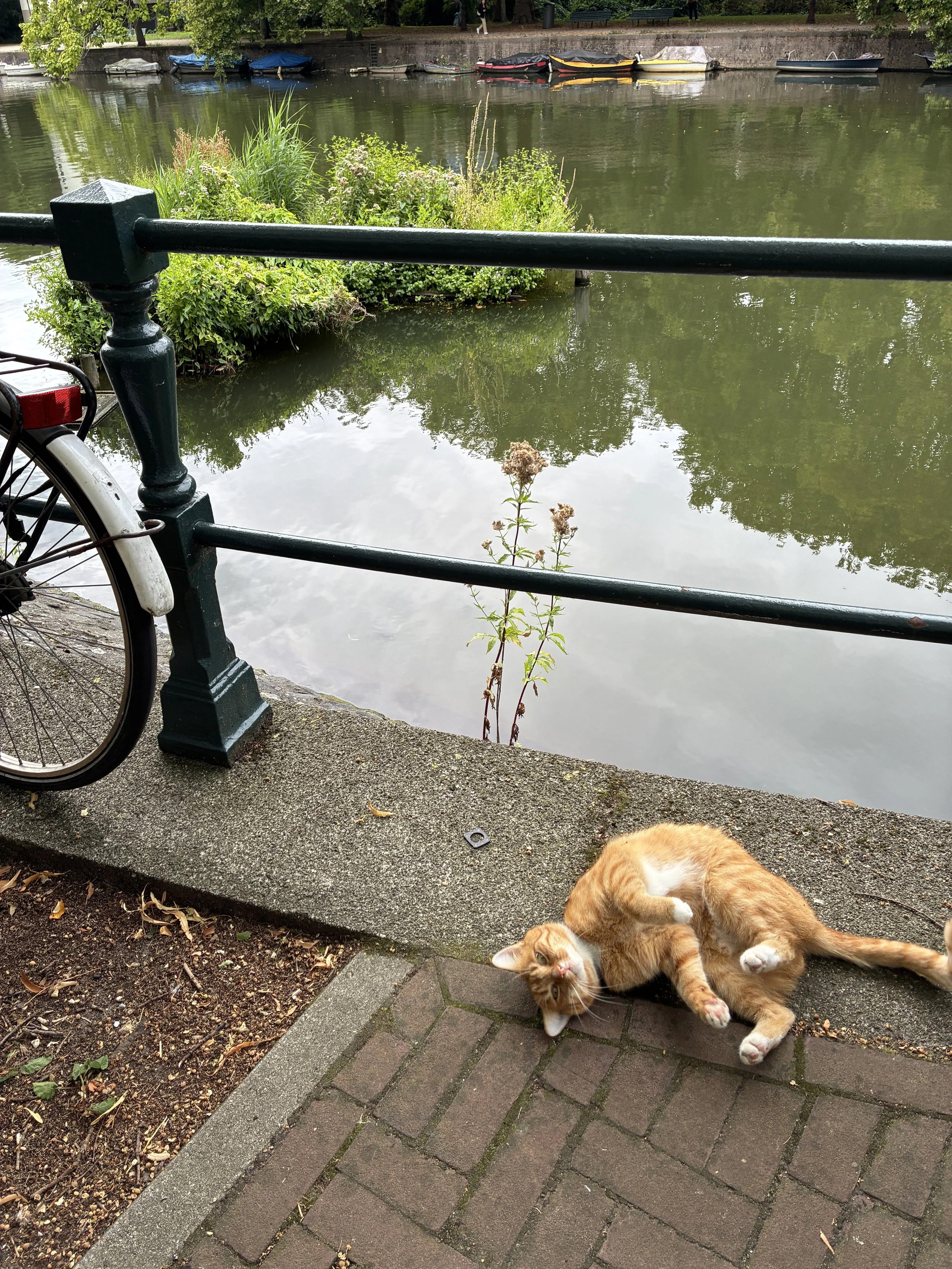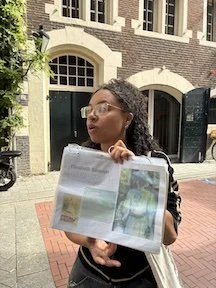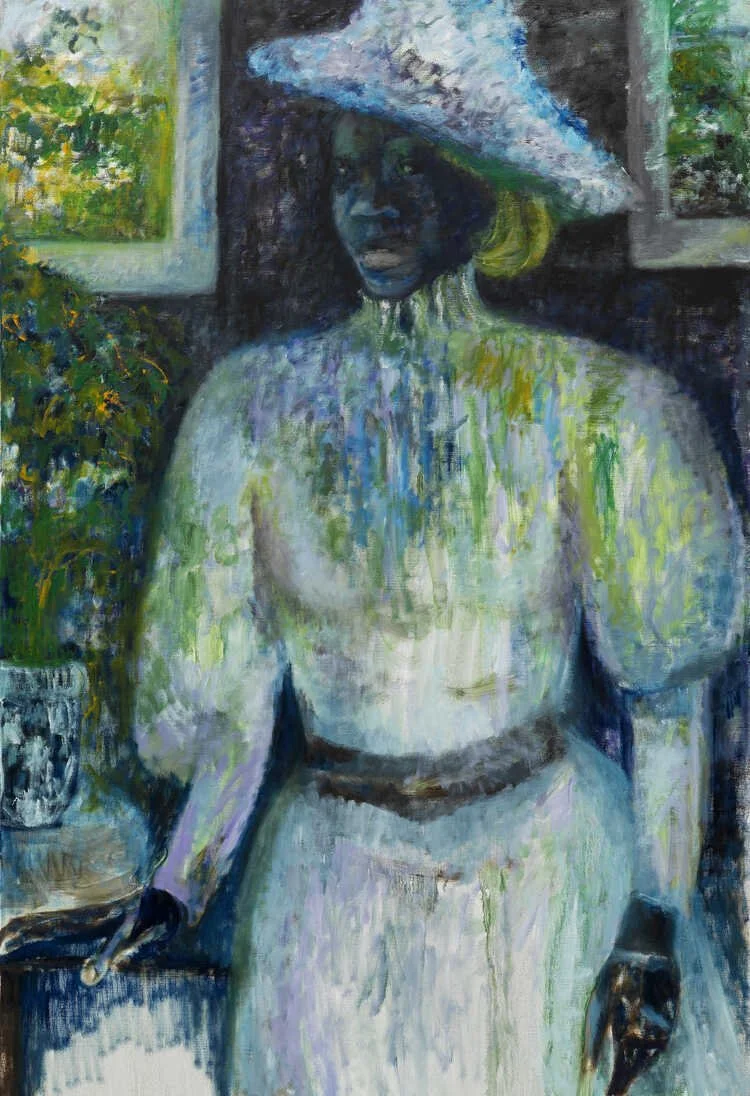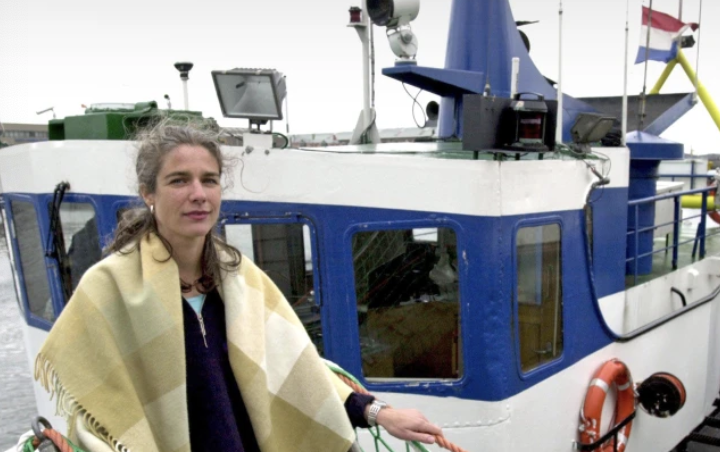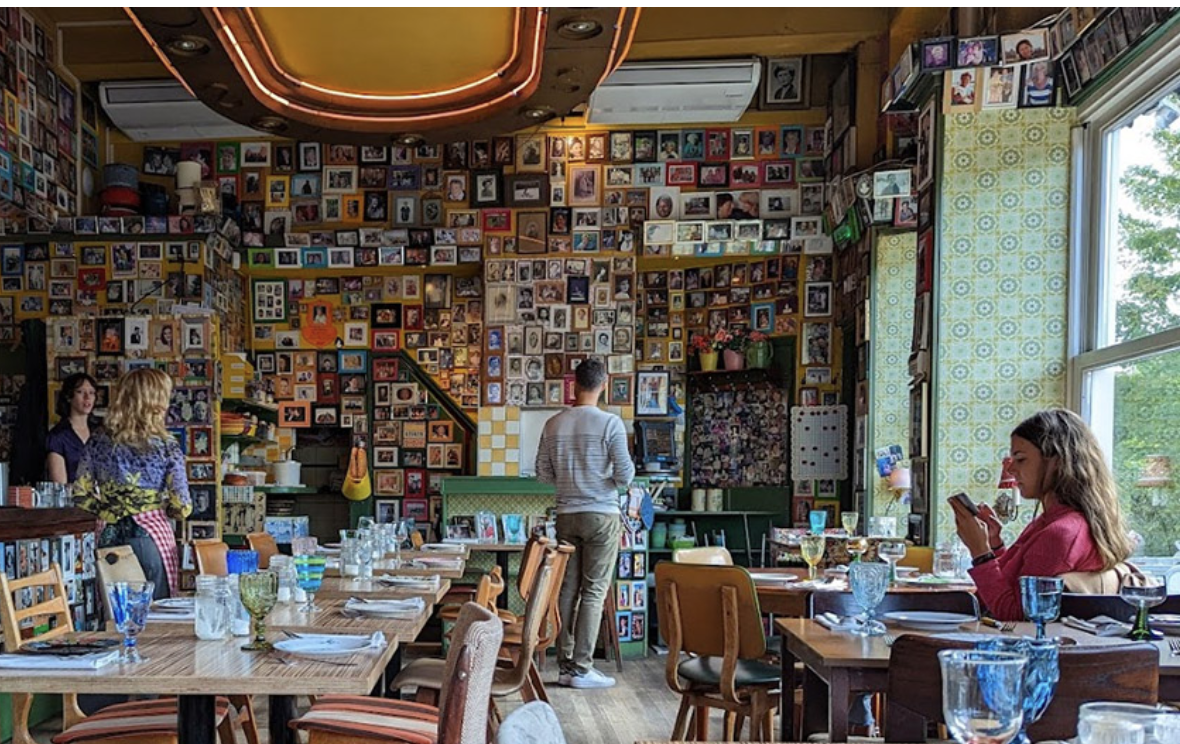Women Around the World Who ROCK
Potato riot women, Amsterdam
Is there a place on Earth where rockin’ women aren’t found? Nope. For decades, I’ve looked for amazing women wherever I traveled, whether it’s a teeny town or a world-renowned metropolis. My itinerary will take me to sites where women worked to make their community better or excelled at any number of things. I’ve found my woman-based meanderings a wonderful way to get to really know a place.
I’ve always wanted to share what I’ve learned—that’s why I’ve been a journalist all my life. And that’s why I started this website in 2022. My website includes much on the Hidden HerStories and MoreStories of the Texas town where I’ve lived for 33 years, but I’m gradually expanding to places I visit—which could include a location 10 miles away or 1,000 or 5,000 miles away.
I aim to make HerStory exploration easy and enticing. So I typically alert a traveler (armchair or IRL) to a HerStory site close to a top tourist destination that’s likely to be on their must-see list. Easy-squeezy to walk a few blocks from that top destination to see a few spots where women did something amazing. But I also include HerStory sites that take a visitor to enchanting but lesser-known neighborhoods. A reader will find a smorgasbord to choose what appeals on any given point in a trip.
AMSTERDAM WOMEN
Herewith, an offering of awesome Amsterdam women I just visited! First, thumbs up to a city that salutes women and other overlooked groups more than most. Amsterdam’s public history monuments and outreach give visitors a more complete Amsterdam and Dutch history beyond the typical tributes to wealthy white men. And Amsterdam’s public history includes truthful looks at slavery and Nazi collaboration (as well as Amsterdammers’ resistance to those evils). Online jewels such as Mapping Slavery, which gives the real story on famous Amsterdam sites, make self-explorations much richer.
Some outstanding agencies offer tours that spotlight a complete history, such as Badass Tours, which gives visitors looks at Amsterdam’s Asian, Black, Jewish, LGBTQ+ changemakers as well as the Women’s History Walk I took. The walk was a fab adjunct to the women I found in my research.
Let’s go look for ladies! And enjoy your meanders in one of the world’s most beautiful cities.
ARRIVAL: AMSTERDAM CENTRAAL
Central train station
Jan, longtime Dutch hero
Maybe you’ll be one of the many, many visitors who like me arrive by train and step out to Amsterdam Central Station’s red brick splendor. Many visitors begin Amsterdam exploring by heading down Damrak, the main avenue from the station that leads to the Palace. Join them, but make a few stops for the forgotten females.
Cut Nyak Dhien: Colonizer Fighter
Walk just a few blocks down Damrak and stop at the huge brick building, Beurs Van Berlage, the former stock exchange. At the corner of the building at Damrak and Oudebrugsteeg, look at the statue set into the corner. Meet Jan Pieterszoon Coen, the “Butcher of Banda.”
Woman at entry to former stock exchange
Hold that thought and head left to the building’s next corner. See the woman’s head by the scales etched above the entrance? Look underneath that surface to see her naked body. This is the sobering first stop of the awesome Badass Tours’ Women’s History walk I took with our super guide Rissa. As she notes, the selling and exploitation of bodies of women, men, and children who lived in countries colonized by the Dutch powered mightily the wheels of commerce for Amsterdam and the Netherlands.
Colonial people were enslaved and often died because of the likes of Jan Pieterszoon Coen, governor of the Dutch East India Company. Enraged that the people of the Indonesian Banda or “Spice Islands” wouldn’t sell their nutmeg and mace at cut rates exclusively to the Dutch, Coen had nearly the whole Banda population killed or enslaved. That was one horrible chapter in the colonizing atrocities over centuries: From the 1600s, the colonization work done by the East and West India companies and Dutch military included rape, torture, enslavement, and executions that continued until Indonesia’s independence struggle in the 1940s. The profiteering on work done by the subjugated people financed many of the beautiful Amsterdam mansions.
Colonizer fighter Cut Nyak Dhien
The woman that Badass Tours honors here is Cut Nyak Dhien. She led guerilla forces against Dutch colonizers in north Indonesia’s Sumatra. Over 25 years of resistance, she crafted strategies to inspire fighters and outsmart the Dutch. She was captured by the Dutch in 1905. She persuaded them not to kill her, but they exiled her. Joke’s on them: Her daughter Cut Gambang escaped and continued the resistance.
Cut Nyak Dhien is designated a National Hero in Indonesia, with her house made a museum and her face on a banknote and a stamp and on streets and more sites.
Join the tourists and head down Damrak a few more blocks to the Palace.
ROYAL PALACE: QUEENS RULE
Queen Wilhelmina and her daughter line ruled the Netherlands for a century.
Whether you go inside to view Royal Palace opulence or give its somewhat drab exterior a glance from Dam Square, toast the Queens! Queen Wilhelmina was the first in a line of four Dutch bawss ladies who ruled for a century, starting with Wilhelmina’s 58-year rule starting in 1890. It’s complicated, but she’s credited for inspiring the Dutch during occupation (Churchill called her “the only real man among the governments-in-exile”; she also made some Nazi-friendly deals); she advocating for “Ethical Policy” that aimed to stop brutal treatment of colonized people and power share (plenty of bad shit still happened); and she pushed for women’s suffrage.
Wilhelmina’s daughter Queen Juliana was somewhat progressive on social issues during her reign from 1948 to 1980 and cultivated a “queen of the people” approach (No more royal curtsies! The kids go to public school!). Her daughter Queen Beatrix took the reins from 1980 to 2013. Things started badly when she married a former Hitler youth member, but she’s known for passing on more royal power to the Parliament; advocating for the European Union; and being a bit of a tree-hugger.
Catharina-Amalia: Next Netherlands lady in charge
The lad Willems took back over when Beatrix’s boy Willem-Alexander ascended in 2013 and continues to rule. The Dutch monarchy started with three Willems who ruled from 1815-1890.
But guess what? The royal family now only has daughters. So Queen rule will be back when their eldest daughter takes over. Then, all hail the new Dutch ruler: Catharina-Amalia Beatrix Carmen Victoria, Princess of Orange, Princess of the Netherlands, Princess of Orange-Nassau, the QUEEN.
DAM SQUARE: ALL HAIL MARRETJE!
Nice to have some lady royals, but while standing in front of the Palace in Dam Square, DO celebrate one particularly bodacious commoner woman who fought for justice outside this palace. She reminds us that the justice work of everyday women is far more inspirational than those of cossetted monarchs.
Marretje Arents sold fish and limes daily right here on the Square, supporting her four children while her soldier husband served in the East Indies. Marretje was among many Amsterdamsters angry at their high taxes which impoverished working people and funded wars of aggression and royal excess.
Marretje was a ringleader in the attacks on nearly 40 tax collectors in June, 1784, in the neighborhood around current Rembrandt plaza (formerly Botermarkt, the place to get butter and other dairy from farmers). Dressed in red, she urged others to join her in breaking into tax collector houses, looting and throwing their riches into the canals.
Marretje led women and men in the 1784 Pachtersoproer tax riots pictured here.
Marretje led the rioters to the chief tax officer. A chronicler reports that she said this to him: "Today we are in charge, and tomorrow we will come to you at the town hall. Then we will see what we will do with all of you, you land-grabbing gentlemen." She then turned and mooned the tax chief, saying that "Now you can clean my ass, because I will do that much for you.”
Happy ending for the people: Tax collections were postponed for six months. Bad news for Marretje: She was arrested a few days later at her market stall and jailed in the basement cells of the City Hall, the original building that grew into the Palace. She was sentenced to death by hanging in the weighing house once here in Dam Square to weigh the many wares sold here. Defiant until the end, she shouted from the gallows: “I did it for the whole country, against the tyranny of the tenants, who tormented us citizens and forcibly took our money and goods for the lease.”
SHOPPING . . . FOR WOMEN’S RIGHTS
From the Royal Palace, many tourists will file like lemmings onto Kalverstraat, a street littered with the same stores that . . . anyone can shop at in most US cities and big cities abroad. I know that YOU are not going to squander your time in one of the world’s most fascinating cities to get one more gander at the latest at Urban Outfitters. No, you will want to walk from Dam Square just a half-block down Kalverstraat to number 22, where women fomented suffrage rebellion.
Wilhelmina “Iron Will” Drucker
Because you have GOT to meet Wilhelmina Drucker, known as “The Iron Will” in her drive to get rights for Dutch women. First, a little background. Wilhelmina came from challenging circumstances, born in 1887 as an illegitimate daughter of a seamstress and a banker who refused to recognize or care for her. Nevertheless, she persisted. She sewed for a living as her mother did, and took up socialism. Wilhelmina learned that her half-brother got an inheritance out of her rich dad, so she sued and got a settlement from him that gave her financial independence.
Have fun, boys; we’re plotting revo.
She started the Free Women's Association, which spawned an avalanche of activism. Some of the activism strategizing happened when Wilhelmina and other radical women met here at Kalverstraat 22, which used to be the Suisse Hotel. While the monied men of Amsterdam played billiards, feminists met in the adjacent café to launch Vrije Vrouwen Vereeniging, the Free Women's Association.
Wilhelmina rallied her sisters to get a feminist magazine going and start women’s trade unions. She lectured throughout Europe on women’s rights, particularly for suffrage and for unmarried women’s access to a livelihood that would support a family. She collaborated with leading feminist and suffragist Aletta Jacobs (you’ll meet Aletta below in my look at ladies of the cool Jordaan neighborhood) to work with the masses of women fighting for their rights. Thankfully, Wilhelmina was able to see suffrage enacted before she died in 1925.
“Iron Will” Wilhelmina also inspired generations to come! Her fierce determination got her the nickname of Dolle Mina—Dolle meaning “mad” or “crazy” and ‘Mina shortened from Wilhelmina. In the 1970s, Dutch feminists were inspired to dub their new activist group Dolle Mina.
Dolle Mina: Boss over my own belly!
Here’s just one of their activisms: They broke into a meeting of gynecologists in Utrecht, south of Amsterdam, to protest the lack of abortion rights. They wrote baas in eigen buik (boss over my own belly) on their stomachs. They also wrapped pink ribbons around urinals to promote public toilets for women; jostled and whistled at men so they could experience a bit of relentless sexual harassment women do; and stormed schools, bars, and other male-only bastions.
Dam Square: Dolle Mina demo for subsidized day care, 1971
Dolle Mina members demonstrated for more childcare support, bringing playpens and real babies to places such as Dam Square. AND Dolle Mina members gathered in 1970 at Wilhelmina’s statue to burn a corset to salute her work to free women from oppressive laws. You, too, can honor Wilhelmina at her statue, located not far from sculptures of other amazing women. Look below for the SALLY FORTH walk to honor women in the south Amsterdam area. And NO WE’RE NOT ANGRY that statues of women and streets named for women in many cities are typically located away from the city centers, denying them ease of viewing, particularly for tourists!
Today’s Dolle Mina members at Dam Square in 2025 continue the work!
Best of all, Dolle Mina continues! Chapters are thriving throughout the Netherlands, continuing with actions such as the annual Claim the Night marches that happened this September 1 in 19 cities. Members speak out for legislation addressing violence against women and other issues and ally with groups addressing racism and repressive state actions. Plus, they still meet at Wilhelmina’s statue to renew their commitment to feminism!
Atria Institute on Gender Equality and Women’s History: Visit!
Thanks to the awesome Atria Institute on Gender Equality and Women's History for details on Dolle Mina and so many more resources documenting women making change in the past and present! Visit them at Vijzelstraat 20, where you can browse books and publications, much of it in English. And then wander the area—full of interesting spots to linger.
Klara Mimi Meijers
Young people today are appalled when we women of a certain age remind them that before 1974, women couldn’t get a loan or credit card without Daddy or Hubby signing on. A full century before that, women such as Klara Meijers were fighting for financial autonomy. Klara had worked in the banking industry and seen women struggle to get loans or even get equitable attention from bank clerks and officers.
Pop over to Rokin 23 and give thanks: Klara worked for years to get the Women’s Bank up and running at this site in 1928. Women of all kinds—students, widows, women’s group members—flocked here to get fair access to money to start businesses and follow their goals. Klara also traveled around to give women financial education. The Women’s Bank survived the Great Depression when other banks went under, and continued until 1971. A few years later in the mid-1970s, women’s banks flowered in the US.
Klara, seated right, started the Women’s Bank in 1928.
When Klara died in 1964, she gave big money to the Charlotte Jacobs fund for girls. Charlotte is the sister of Aletta Jacobs—see below for details on superfeminist Aletta. Charlotte became the first Dutch female pharmacist in 1879 and ran a pharmacy in the East Indies. There she pushed for better education for ALL females, not just the white ones.
RIJKSMUSEUM: ART EQUITY
Artlovers won’t miss a visit to this epic museum. What most don’t know is that some of the best of the “Dutch Masters” people flock to see were women! But of course, their art and deserved fame have been hidden—or stolen!—for centuries.
Dutch “Master” Judith painted this, but her rival painted over her signature.
The Rijksmusuem got the memo in 2021 and, for the first time since it opened in 1885, featured a few of these amazing women artists in the museum’s prime spot, the Gallery of Honour. Since then, the museum offers visitors a more women-centric experience with a self-guided women’s tour on an app and continuing programs to keep art acquisition equitable. You don’t have to travel there: Search “women” at the Rijksmuseum website to see art and stories of women artmakers. Here’s a sampling.
Judith Leyster
Judith self-portrait, c. 1630
Love Judith’s self-confident self-portrait! And her painting above shows why her fame was hidden for so long: “The Serenade” was signed by artist Frans Hal, a rival who liked to steal her students. Frans was thought to be the artist Golden Boy of the Golden Age of Dutch history, when colonial exploitation fueled a wave of wealth and art commissions. The Louvre discovered his signature to be false; the painting originally had Leyster’s distinctive monogram: her initials entwined with a five-pointed star.
Judith may have started painting because her father’s brewery business failed and she and her siblings had to go to work. Either way, her exemplary talents were noted and by age 24 she was the second woman allowed into the master painters guild. She painted most of her known work before she got married to another painter, Jan Miense Molenaer, and had five children. Over the years, many of her paintings were attributed to Frans or to her husband; in addition to sexism, signatures were changed on women’s work because paintings done by better-known males would sell for more. Now Judith’s work likely eclipses many male “masters” in value.
Gesina ter Borch
Gesina painted—AND SIGNED—this one.
Gesina was born in 1631 into a family of artists of means, so she didn’t need to support herself as an artist. Unfortunately, she seldom signed her work. She created some paintings in collaboration with her half-brother, who then signed them and got sole credit. This portrait of their little brother Moses is the only known painting signed by Gesina. It was acquired for three million euros by the Rijksmuseum in 2023 from an antiques dealer unwitting of its current value and import.
Gesina enjoyed working in poetry and philosophy in her watercolor paintings, which she preserved in a diary-type notebook. Here’s one of them.
Is Gesina foreshadowing her obscurity with the female artist’s gagged mouth?
Rachel Ruysch
Rachel Ruysch’s work gained quite a bit of fame in her lifetime—her paintings often sold for twice more than the paintings of Rembrandt! So we have sexism to thank for the fact that her import was buried until recently. Rachel’s mother came from a painter family and her father was a professor of anatomy and botany who taught at Amsterdam’s Hortus Botanicus (check out those gorgeous gardens!). Rachel was inspired by the delectable flora at the gardens. Her early paintings at age 15 were so good that she was allowed to go pro. Her specialty became beautiful portraits of flowers; she also liked to add in insects and reptiles of the forest floor.
Vase of Flowers with an Ear of Corn, 1742
Rachel, Juriaen, and son Joan Willem
Rachel married in 1693 and had 10 children; because her income funded childcare, she continued painting. Thumbs up to husband Juriaen Pool! He painted this family portrait. Rachel didn’t marry for status: Juriaen was younger and raised in an orphanage, where he learned painting. While he did work as a painter, he spent more time promoting HER career.
Rachel’s renown spread to other countries, and she became a long-distance court painter for a German prince to deliver one highly paid painting a year. Plus she literally won the Dutch lottery, which nicely enhanced her financial security. She was the first woman to be a member of the fabled artists’ society Confrerie Pictura in The Hague. She only stopped painting when she died at 86.
Maria created art and science facts.
Maria Sibylla Merian
And guess who taught Rachel Ruysch? This amazing woman, Maria Sibylla Merian, who painted hundreds of beautiful scientific illustrations and traveled far afield to learn and collect plant and insect specimens. Plus she made groundbreaking scientific discoveries. I wanted to imagine her doing her work, so I conjured her at the block of cool Kerkstraat where she had lived (couldn’t find a house number in my research) close by the Rijksmuseum.
This was a woman fascinated by insects, raising silkworms and caterpillars as a girl in Frankfurt, carefully observing and drawing their life cycles. She later published illustrated books about insect life cycles, disproving the widespread belief of the time that insect eggs were generated spontaneously in mud or water. A pioneer ecologist, she proved and illustrated the symbiotic relationship of insects to plant and flower species.
Enslaved people used peacock flower to keep babies from being born into slavery.
In 1691, she and her daughters Johanna and Dorothea moved to Amsterdam. She supported them by selling her illustrations of insects and flowers, and took in art students, including Rachel Ruysch. She sold paintings and got a small grant from the city to travel with Dorothea to Suriname, then a rough South American colony, to document insects, plants, and animals there. She learned of the medicinal uses of many of the plants from the indigenous people she was assigned as slaves. She also railed against the Dutch barons for using the labor of enslaved persons.
One of her study subjects was the peacock flower, later known as Pride of Barbados—a plant common to my area and backyard. She wrote: “'The Indians, who are not treated well by their Dutch masters, use the seeds to abort their children, so that they will not become slaves like themselves . . . In fact, they sometimes take their own lives because they are treated so badly, and because they believe they will be born again, free and living in their own land. They told me this themselves.'
Maria discovered nearly 100 new species, and some are named after her, such as the giant tarantula spider Avicularia merianae.
JORDAAN CHANGEMAKERS
Bloemgracht or “flower canal” in Jordaan
Jordaan is super hipstah now, dotted with chic cafes and boutiques. But it started as the poor neighborhood for workers and immigrants, who serviced the rich who lived nearby in the city center. Houses were small and stuffed with big families; by 1900, some 80,000 squeezed into a neighborhood that now houses around 20,000. Poverty’s fallout was everywhere, and women were leaders in bettering health and housing. Let’s honor a few.
Aletta Jacobs
Aletta helped poor women and sex workers.
Envision Aletta Jacobs doing her challenging work here at Spuistraat 2. She came to Jordaan after struggling against rampant sexism to get a medical degree. She established a clinic here in 1880, providing free healthcare for poor women and children and sex workers. She saw the toll on women of having babies year after year, so she provided them with birth control such as the new diaphragm—which became known as “the Dutch cap.”
Aletta Jacobs is seen by many as the founder of feminism in the Netherlands. In 1879, she became the first licensed Dutch woman doctor. She sued for the right to vote, arguing that the law didn’t specifically prohibit women. The Supreme Court ruled against her. She devoted herself to improving women's working conditions and getting voting rights. In 1903, she gave up her doctor practice to lead the Women's Suffrage Association. She spoke worldwide for suffrage, including a global tour with American suffragist Carrie Chapman Catt. In 1919, she finally got to see suffrage for all women.
Suffragist Carrie Chapman Catt and Aletta talking suffrage in Shanghai, 1912.
This building that housed her clinic is herstoric as well. It was a bastion of workers’ rights organizations and arts groups that supported justice. The Werkteater put on theater productions here and in community settings such as prisons and hospitals and schools during the 1970s and ‘80s. They engaged and activated the community around important issues such as aging and healthcare and arts-making.
The Dutch honor Aletta’s contributions in many ways: Her name is on streets and schools such as the Dr. Aletta Jacobs vocational school; there’s even a planetoid named after her! If you’re visiting the Rijksmuseum or Vondelpark, see her house with a bust of her on it at nearby Tesselschadestraat 15.
Potato Riot women
Enjoy a stroll down Prinsenstraat street, but stop by number 11 to picture life here in the early years of WWI, when food basics were being highly rationed. Women who needed to feed their families came together and decided to get food however they could. They broke into the grocery at Prinsenstraat 11 to take food, as well as other spots such as potato vendors.
Women fight to feed families.
Women’s committees numbering thousands in Amsterdam and other Dutch cities carried out actions ranging from petitioning government officials for more and cheaper food to looting coal barges in the lean years of 1916 and 1917. Actions ramped up in the summer; police fired on crowds, killing and injuring protestors. Factory workers joined in with a strike, and finally, the women got some food relief.
Noordermarkt Riotgrrrls
Women were also at the forefront of struggles a decade later, when unemployment rose to record highs as Hitler gained power in nearby Germany. Some 50,000 Amsterdammers were jobless, and women with paid and unpaid jobs were speaking out. On July 4, 1934, riots broke out in several neighborhoods, including Jordaan.
Riot leaders: Unity the Strongest Chain
Women were at the barricades near this statue on Noordermarkt and elsewhere in Jordaan and other neighborhoods. Visit the statue, titled Unity the Strongest Chain, on a Saturday and enjoy the enticing market at 400-year-old Noordermarkt square as well. The Noordermarkt, once called the Princenmarkt, was a rag and patch market where women would repair clothing. Stroll a few blocks to imagine the height of the riot on Tweede Goudsbloemdwarsstraat street.
Anne Frank
Your Jordaan exploration may include a visit to the amazing Anne Frank House at Westermarkt 20. Do go, but look below in the Plantage neighborhood section for another way to bring home the scope of the death and imprisonment of some 107,000 Jewish people—children like Anne Frank, too—along with homesexuals, disabled people, Romas, and others. Find brave women who resisted.
Helena Mercier
Helena’s community school was here.
Given the gentrification of Jordaan that long ago forced out the poor people and then hippies and ‘creatives’ in the 1970s, it’s gratifying when a bougie business incorporates the herstory of their building. So it is with the Hotel Mercier at Rozenstraat 12, named after Helena Mercier, who’s credited as the mother of social work in the Netherlands.
Helena: Fix poverty through access to basic needs.
If you pop in to tell the Hotel Mercier folks “thanks” for keeping Helena’s legacy alive with her name, look as you enter for the “Ons Huis” preserved above its entrance. Helena started the “Our House” community school for children and adults in 1892. She believed that Jordaan’s impoverished people needed basic needs met before they could rise, such as education, decent housing, and adequate nutrition. She started up community kitchens to provide nutritious hot meals at low cost. She got funding to improve some 130 houses in Jordaan, and her advocacy for a Housing Act passed in 1901.
Marie put social work in action.
Helena’s writing brought like-minded activists who also believed that the way out of poverty was through education and access to basic nutrition, healthcare, and housing.
Marie Muller-Lulofs worked with Helena to create in 1904 the School of Social Work, still continuing at the Amsterdam University of Applied Science, where a building is named for her.
Marie also started agencies for home healthcare, after-school daycares and children’s libraries, organizations to help with unemployment and poor housing; plus she started a credit union to give poor people access to nonprofit banking.
RED LIGHT RADICALS
Alida’s home where she helped sex workers
Amsterdam’s “Red Light District” or De Wallen neighborhood feels somewhat tame, and it’s easy to bypass if you want the red-curtained windows with sex workers posed as well as the strip clubs and sex toy shops. Like most Old Town areas, it’s full of enchanting typical Dutch houses like this one. If you’re curious about the reality of legalized prostitution, you can stop by the Prostitute Information Center started in 1994 by a former sex worker.
Or you can go visit the historical women of this area! From the Prostitute Info Center, walk a few minutes up Oudezijds Voorburgwal to this beautiful 1605 building, home to Alida Bosshardt, friend of the sex workers.
Sit down next to Alida in front of her house.
Alida liked how the Salvation Army helped people, so she joined up as a teen and over the years became a Major in the Salvation Army. When she was younger, Alida worked at an orphanage for Jewish children, and rescued some 70 of them during the war. She’d bicycle the children to rural areas, and bring back food for the hungry mouths.
Then Alida decided she’d move to the Red Light neighborhood and help the sex workers. She used her home here as a shelter and a center to deal with issues for those working on the streets. She’d also help sex workers find other work if they chose.
Alida was a committed Christian, but was a pragmatist about sex work. She saw her mission as simply helping sex workers and anyone in the neighborhood down on their luck. You can tour her home and shelter; be sure to sit on her bench in front. And walk south on this canal—the second bridge you’ll see is dedicated to Majoor Bosshardt. Many of Amsterdam’s 1,900 bridges are named after people.
Bet’s bar and gay refuge
Alida was a neighborhood regular, with regular stops including a well-loved bar owned by a lesbian. Walk on over to that place, Café t’ Mandje at Zeedijk 63. Step in to revel in the decor and memories of Bet Van Beeren. When Alida stopped by to visit Bet, Bet would make her bar customers pony up for the Salvation Army.
Bet bought this place from her uncle in 1927 and opened it up to gay people. It was a safe haven during times when homosexuality was still forbidden, and she looked out for her customers. She forbade kissing and such; someone could be jailed for that and the authorities would close her place. (She did allow same-sex snogging and dancing on Queen’s Day, because that’s the day that all the Dutch get to go crazy!)
And when the Nazis took over, homosexual behavior could be a death sentence. Bet sometimes stored weapons for the Resistance in the attic. If a snoopy Nazi soldier came around, she ply him with plenty of beers and talk his ear off until he left.
Bet loved to play pool.
Bet loved to shoot pool, ride motorcycles, and smoke cigars. She liked to cut off the neckties of posh guys and hang them from the rafters. The ties are still there, along with other eclectic miscellania and great photos of Bet.
When Bet died in 1967, her body lie in state for two days atop the pool table as hundreds of friends paid tribute.
Her sister Greet took over the bar, and then her niece Diana took charge. Go in and have a drink, and salute Bet’s haven! Then go outside, and walk south on Zeedijk. Take a right at the next bridge to walk across the bridge named for Bet van Beerin.
PLANTAGE AND JEWISH QUARTER
Explore and learn in the beautiful Plantage neighborhood.
The Plantage neighborhood is a draw for its gardens and attractions such as a zoo and botanical garden and lovely restaurants and cafés amid the green escapes. The neighborhood became culturally richer with the arrival of Jewish people who sought out Amsterdam’s acceptance after fleeing other places hostile to Jews. The Great Portuguese Synagogue was the biggest synagogue in the 17th century world. Theaters and concert halls sprung up, many retained today for our enjoyment. But this neighborhood became a very dark place during the war.
Start the journey at a cool “brown bar.”
This walkabout deals with despair and hope and hate and beauty, so be prepared. Your walk could start with a calming drink—maybe a homebrewed beer or a tea. You could sip at this fabled Amsterdam “bruine kroegen” or brown bar, Café de Druif at Rapenburgerplein 83. It’s a winner among brown bars, which are characterized by lots of warm brown centuries-old décor and cozy neighborhood feel. One of the city’s oldest, Café de Druif opened its doors in 1631. After you renew and walk out the door, turn right on Nieuwe Herengracht and stop in front of the first apartment at 259 Nieuwe Herengracht.
Magdalena, one of many “Anne Franks”
This was the first Amsterdam home of Isodore van Geldere and spouse Eva Nort. Isodore was a hawker and dealer of goods, and as the family prospered, they had six children, including three whose photos survived: Magdalena, Salomon, and Betsij. The entire family died horrible deaths at the Auschwitz-Birkenau concentration camp, including the newlywed eldest daughter and her husband.
Magdalena was 15 when she was murdered. Had she, like Anne Frank, kept a diary? Surely she also had the same teen dreams and visions of a long and loving/loved life ahead.
You can learn about so many other Jewish children and babies and parents in the expulsion and death of some 107,000 Jewish people in an extraordinary research effort by the Digital Jewish Monument. They’ve documented thousands of people, uploading their photos, their stories, and their endings. Just look at the homepage to click on the changing photos that lead to their details.
Keep walking down the block to reach Anne Frank street, one of several commemorations of her around the city and world. Take a left to walk down Anne Frankstraat to the Resistance Museum or Vervetsmuseum at Plantage Kerklaan 61. You’ll find plenty of evidence of both Jewish and non-Jewish resistance to the Nazi invasion in 1940 and the many hideous measures taken until the liberation by the Allies in late 1944 and German surrender in 1945. Kudos for the Museum’s courageous adjacent museum to educate younger visitors, the Resistance Museum Junior!
Hannie, Truus, and Freddie fought back with incredible daring and courage.
For armchair travelers, consider just a few examples of women who courageously took on amazing acts of resistance. Envision these three young women, just teenagers when they took on dangerous work: Hannie Schaft, 19; Truus Oversteegen, 16, and her sister Freddie, 14. They lived in Haarlem, about 20 minutes by train from Amsterdam. The sisters had resistance-minded parents who were hiding Jewish people, so they started early doing undercover courier work and passing on news and encouragement for others to join in resistance.
Soon the sisters were dynamiting bridges and burning Nazi warehouses, with their youthful appearances allowing them to move in the community and not arouse suspicion. They met Hannie, who’d been organizing students at the University of Amsterdam to resist. Sometimes Truus would dress as a man, pretending to be Hannie’s boyfriend.
Truus and friends killed those killing Jews.
The three took it up a big level: They volunteered to kill Dutch collaborators and the occasional Nazi soldier. They’d flirt with them and get them to follow them into the nearby woods, where they’d shoot them. At times they’d do a tandem driveby kill on a bike, with the backseat rider shooting an enemy while the bike driver furiously pedaled away. Watch this moving video about the three, with testimony from their now-older children.
Hannie was betrayed by a collaborator and executed in April, 1945, just weeks before the war ended. Truus went on to speak far and wide about the need to ally with those victimized. She also became a sculptor whose works often referred to the horrors and triumphs of the resistance times. You can see her sculptures and a bust of her in south Amsterdam—look below for a walk that includes monuments to other Dutch women who deserve much more recognition around the world.
Truus with Princess Juliana at the Hannie statue unveiling, 1982
AND you can take a 20-minute train ride to Haarlem to see the tribute Truus sculpted for Hannie Schraft at a park just minutes from the Haarlem train station. Follow it by a walk around beautiful Haarlem! Look for the Haarlem walk below.
Frieda Belinfante
Frieda off to resistance work
Now head over to Plantage Kerklaan 36. The beautiful Cafe-Restaurant de Plantage is on a site once occupied by the City Registry. It was used by Nazis to store the ID papers of all the people they were persecuting. Frieda Belinfante and others had plans for this building. Frieda was a musical prodigy who became the first woman in Europe to be artistic director and conductor of a professional orchestral ensemble. When the war started, she joined the group headed by her good friend Willem Arondeus. Both of them were gay people, another group facing Nazi hate.
The group worked busy late into the nights creating fake documents to save Jewish people as well as gay people and others targeted. But they knew that as long as the Nazis could doublecheck the fake papers against the real papers, the escapees could get caught and killed or sent away. So they vowed to blow up the Amsterdam Civil Registry office, and set the bombing date for March 27, 1943.
800,000 ID papers destroyed
Group members showed up disguised in police uniforms, and told the guards that they had come to search the building for explosives. The guards believed them, and as soon as they were in, two medical student resisters sedated the guards with an injection and pulled them out of the building. Throwing documents out of drawers and dousing them with benzene, they left swiftly. Timed explosions started the building ablaze. Allies within the fire department delayed their arrival, and then thoroughly doused the blaze to cause additional water damage.
While not all the papers were destroyed, 800,000 of them were, and the operation was a huge morale boost for resisters.
Frieda recalls the bombing.
Willem was found out and executed, and Frieda immediately disguised herself as a male and left, walking in winter across the Alps to France. She emigrated to the US in 1947 and pursued music again, founding and conducting the Orange County Philharmonic. She traveled to Europe and elsewhere to be a guest conductor.
Watch a short video about the daring operation, with Frieda at 90 giving her memories. The video also tells about the Homomonument at Amsterdam’s Westermarkt, honoring all oppressed LGBTQ+ people.
Auntie Truus’ rescue stop: Amsterdam Museum
Enjoy your pleasure at the Plantage grounds—dining, zoo and nature museum, butterfly pavilion—and then explore nearby the four cornerstones of the Jewish Cultural Quarter: the National Holocaust Museum; the Jewish Museum; the Portuguese Synagogue; and the Hollandsche Schouwburg, a grand theater that was a Jewish detention center.
Truus Wijsmuller and her statue at Bachplein
Then head over to the Amsterdam Museum at Amstel 51 to conjure another undersung shero. Imagine it’s the war years and the Museum building was the orphanage that had operated since the 1500s. Visualize Truus Wijsmuller spiriting out Jewish children from the orphanage, one of her many places to stash children. Over the war years, Truus would get some 10,000 Jewish children out from hiding places in the Netherlands, Germany, and Austria to safer countries in Europe.
She was known as a loving Tante or Auntie Truus to her rescued children, and Stoomwals or steamroller to the many officials and soldiers that she badgered and cajoled and deceived. She knocked on Adolf Eichmann’s door in Vienna to ask to take 600 Jewish children out of the country. He wanted to get rid of them, so he agreed, calling her a crazy Aryan.
All the Scheinowitz sisters were saved!
After the war, Truus continued to help children malnourished by the war, as well as do many good works such as starting hospitals and getting work for the disabled. She kept in touch with many of her “children.” Meet a few of the now-old children rescued by Truus at this website; info there about the documentary Truus’ Children.
Haarlem (s)Heroes
If you take the 20-minute train ride to Haarlem from Amsterdam in mid-March to mid-May, you’ll see spectacular fields of tulips and other flowers in this top tulip-trading town. But anyday is great to head to Haarlem to see Hannie Schraft’s statue and meet even more amazing women!
If your visit’s from mid-March to mid-May, enjoy the tulips at this tulip-trading mecca!
Kenau and Wigbolt saved Haarlem.
At the plaza in front of the train station, look for this statue of Kenau Simonsdochter Hasselaer, who commanded 300 women to defend the city from the Spanish, along with the military commander Wigbolt Ripperda. The women built up high earthworks, and then threw down flaming tar on the Spanish attackers. Kenau’s husband died, leaving her with four small children. She supported the family as a wood merchant, selling both locally and buying a ship to sail wood to Norway.
If you feel ambitious, amble over to the scenic city gate at the Amsterdamse Poort, built in 1385. You’ll see another statue showing Kenau leading the women. And check out this painting portraying Kenau and the female regiment in battle.
Painting of Kenau and the women defending Haarlem
Corrie Ten Boom saved hundreds.
Head over next to the museum created in the house that Corrie Ten Boom’s family used to shelter Jewish people hunted by the Nazis. Corrie’s father Casper was a watchmaker, and she became the first licensed female watchmaker in the Netherlands. Working with her sister Betsie, she coordinated a network of resistance workers to save at least 600 Jewish people throughout the area, supplying them with food and papers. You can take a virtual tour of the Corrie Ten Boom House as well.
In February, 1944, a Dutch informant led the Nazis to raid the home, and Corrie, Betsie, and Casper were sent to camps. Caspar died at one, and Betsie died when she and Corrie were sent to Ravensbrück in Germany. Corrie survived to help concentration camp survivors and went on to write and give talks around the world.
Honor Hannie the last Sunday of November.
Head over to Kenaupark, whose name honors, natch, the brave battle commander Kenau! In the middle of the park, you’ll find the beautiful memorial Truus made for her friend Hannie, called Woman in Resistance. Every year on the last Sunday in November, crowds gather in Haarlem and elsewhere to honor Hannie Schaft.
EASTERN DOCKLANDS
East Indiaman and other Docklands attractions
Plenty to see in this spot just east of old Town: Big attractions like the ship-shaped NEMO Science Museum, the National Maritime Museum, and Amsterdam’s awesome main public library (with a great LGBTQ+ archive and center) to cool spots like the Mezrab Cultural Center, where you can catch everything from storytellers to comedy to klezmer bands.
Check out the names of islands around here. Where now huge cruise boats dock to disgorge their load, once boats emptied their bounty on Amsterdam’s islands still named Borneo and Java, with its Surinamekade street. This includes a half-million enslaved people headed off to US plantations, and an estimated one-fifth of the cotton and other materials coming in from American plantations.
Ginger Cat and Kattenburg
I came here looking for the place where maybe formerly enslaved businesswoman Elisabeth Samson launched her mighty ship. Hold that thought, because first I want you to meet one of my favorite women. She was an activist fighting for her island, enchantingly called Kattenburg. Supposedly the island was named for the cats kept by the residents to keep the rat population down. I’m going with that name derivation, especially because as I made my way to Kattenburg, I met this very friendly ginger cat!
GingerCat found me when I discovered Marie Altelaarplein, or Marie Altelaar plaza. This quiet hangout and playground is actually on the island of Wittenburg. To find the AWESOME public history work illustrating the work that Marie and other Kattenburg activists, walk across the pedestrian bridge to Kattenburg and get to the intersection of Kattenburgerkruisstraat and Kattenburgerstraat.
Marie fought for her neighbors.
Here several panels tell the story of how Marie’s activist band got the city to make their island affordable after urban renewal nearly destroyed the centuries-old neighborhood. The ceramic panels are presented like the pamphlets used then to publicize an issue. Because it’s Amsterdam where so many walk and bike, this impactful public history is well-noticed by passersby and those seeking it.
The old houses and businesses of Kattenburg Island were demolished in the 1970s to make way for the new highway, with apartment houses then built to replace housing. But when the city reneged on their promise to make apartment rents affordable to those Kattenburgers displaced, Marie got mad. She gathered others, who like her were not young. But they were tough. First they refused to pay the higher rents, submitting only the amount they were promised. Eviction notices followed, but they stood firm. And the rent came down.
Marie kept fighting. When a new bus route bypassed stops residents needed, she led a “bus hijacking” with seniors boarded buses waving rolling pins and wooden spoons and demanded their stops. It worked. She then rallied the group to press for building modifications to combat crime, and they won. She kept at it until her death in 2005.
Stories from Marie and her band of awesome oldies
To portray the depth of the community activism, artists Kristina Leko and David Simpson interviewed the elderly rabblerousers and told their stories in these eye-catching panels. One of the group members told the artists that when she now brainstorms about addressing current problems, she asks herself: What would Marie do?
Elisabeth Samson
Thanks, Rissa!
I learned about Elisabeth from Rissa, our Badass Tour Women’s History guide. Elisabeth was born in 1715 to two freed black people in the Dutch colony Suriname. Her mother Nanoe married a planter, and Elisabeth worked with him in the importing business and by age 19, was buying property.
Elisabeth painting at Amsterdam Museum
She kept buying property—and enslaved people—until she became the richest woman in Suriname. Her mansion in Suriname’s capital Paramaribo—now a museum—was replete with luxuries.
When Elisabeth and her sister Nanette owned four plantations and more properties, Elisabeth commissioned the building of a ship—maybe it launched from this Eastern Docklands harbor!
The ship was named the Miss Nanette and Miss Elisabeth. Elisabeth decided she wanted to marry her white boyfriend; marrying could erase the stigma of “whore” cast her way because she had lived with two other white men. Interracial marriage was forbidden, but she took her case all the way to the highest court in the Hague—and won!
Puzzling Elisabeth’s legacy
Elisabeth is a controversial figure as a Black person who kept enslaved people. The Urban Theater group’s play about her explores this question. As the artistic director Jurgen Tjon A. Fong notes: “Some people see her as the ultimate traitor. She has turned away from her own people and did everything in her power to be accepted by the white colonials. Others see her as a hero. Someone who has used her wealth and influence to get equal rights for black women. We see her as a woman who has both sides in her, but is also hyper-individualistic. She fought against inequality, but mainly because she wanted to get that equal rights herself.”
To get a flavor of the boat and the times of Elisabeth, take the tour of the East Indiaman ship, moored by the National Maritime Museum. The tour and exhibits gives a complete look at both the long and arduous voyages AND their immoral slaving mission.
On the day I visited the Eastern Docklands, the Greenpeace ship was docked next to the East Indiaman. I took the occasion to give a shout-out to Rebecca Gomperts, the Amsterdam doctor who has spent decades getting abortion pills to women seeking bodily autonomy. Rebecca started out as ship’s doctor for the Greenpeace vessel as they sailed on missions of environmental activism. She was helping women in South Africa and saw how they suffered from lack of contraception and reproductive care. Rebecca knew that every nine minutes, a woman somewhere around the globe dies from an attempt to abort.
Rebecca brought reproductive autonomy via ship.
Rebecca got the idea to bring abortion choices to places where it was forbidden, and in 1999 founded Women on Waves. She sailed to places like Ireland, Spain, Guatemala, and Poland where she’d moor in international waters. Women needing abortion pills, contraception, and reproductive education were ferried to the boat.
Women on Waves also sends abortion pills by drone and mail; their Aid Access services are available in the US. Learn more in this documentary about her work, Vessel.
FOOD! AND FEISTY FEMALES
The biggest windmill in Holland, right in Amsterdam!
Naturally, when we travel to a new country or city, we want to try some cool food that’s special to that place. For me, it was the bitterballen I had at this windmill, which was near where I stayed and happens to be the LARGEST windmill in the Netherlands. What a Dutch experience! To sit by the 16th century De Gooyer windmill (one of 26 corn mills twirling back then in Amsterdam) and have a delicious and mysterious Dutch snack right next to it was heaven. As I contemplated the important role of Dutch windmills, I applauded the bitterballen magic that keeps a savory stew-y substance encased inside a yummy crunchy ball.
And if you’re into beer and bitterballen, the homebrew here excels. Plus, the brewery is in a former municipal bathhouse, where you can still see the separate entrances for men and women. Urban activists (mostly women, just saying) created bathhouses in many cities so that poor people who didn’t have bathing at home could affordably clean up.
Louise Went fought for a room of one’s own.
Before you leave the windmill area, jaunt over one block for a nest of streets named for notable women! Louise Wentstraat was named for a woman who worked to get decent housing for all. Concerned that working single women often could only afford to live with a landlady and not have their own space, she got a big apartment complex built for single ladies, later called the Louise WentHuis.
Amsterdam’s first female architect, Margaret Staal-Kropholler, designed the single-lady complex. Margaret designed spaces that reduced housework for the women who did that work, whether they worked outside or in the home.
Margaret, first Dutch female architect
Louise Wentstraat intersects with Ingenieur Jakoba Mulderplein (plein means plaza; straat means street)—more about the first Dutch female construction engineer and urban designer below on the Sally Forth walk. Follow Louise’s street to Wilhelmina Blombergplein—Wilhelmina carried on Louise’s work and wrote about it. And then look for Johanna Ter Meulenplein: Johanna Ter Meulen worked to increase affordable worker’s housing in Amsterdam.
Moeder’s: Going home for Mom’s cooking
Back to food! If you want to get a total Dutch food experience, there are many places. I’d recommend Moeder’s, in part because it’s dedicated to its namesake: Mothers. Hundreds of photos from customers cover the walls of this warm, homey place a bit west of Jordaan. The Dutch fare is served on mismatched china delivered early on by customers. Enjoy mom food that has been cooked in Dutch homes for centuries—everything from the thick split pea and sausage soup (Erwtensoep) to the stewed beef with boiled potatoes and red cabbage (Suddervlees) to their homemade crispy-carmelly trademark Dutch cookie Stroopwafel.
Hannie, super civic activist
Of course, Moeder’s is also nearby feisty females. And also nearby the popular FoodHallen, where anyone in your party can find a cuisine they like. FoodHallen is at Hannie Dankbaarpassage 16, so named for a woman who early on leapt into sustained civic engagement, advocating with the Pacifist Socialist Party and Groen Links (Green Left). Hannie was the first female chair of the Oud-West area. Look for her marker near Tollensstraat 61.
Celebrating the opening of the shelter
Walk to the Oranje Huis at Tollensstraat 59. What’s impressive here is that this 55-unit apartment building is a haven for women and children escaping domestic violence. And “The Orange House” is a shining star of an organization that started, as did many domestic violence groups in the US and worldwide, in the 1970s.
Women called their group Blijf van m'n Lijf, which means Keep Your Hands Off Me. Angry that the daily abuse met by so many women and children was dismissed and hidden, they found a home at a location they kept hidden, where women could escape violence and visits from vengeful partners. Noor.van Crevel was a leader along with other women, and the pushback was strong when they wanted to talk about and find answers to the problem of violence against women. You can listen to Noor and other leaders tell the story of their powerful project.
Noor and the other activists of the 1970s share their story.
Now nearly 50 years later, the group has grown into Blijf Groep, and it offers seven shelters and other programs that have helped 2.5 million clients in the area. Now, shelter locations are known and visible, not hidden—an approach that asserts that when we all know about a problem, we will openly work together to solve it. Blijf’s service scope, along with their programs to educate the populace so that relationships are respectful, make Amsterdam’s network one of the biggest organization of its kind. Amazing work, women, and here’s to a future where your group is no longer needed!
SALLY FORTH FOR WOMEN
Want to see some women-celebrating statues and sculptures? And get away from the tourist crowds? And take a ride on a scenic tram line? Then put on your walking shoes for a nice hour’s amble. Get on the Number 4 Tram; you can hop on at the Central train station, Dam Square, Rembrandt Plaza, and other spots. Or map your trip using city transit here.
Truus sculpted this plea to human decency.
On Tram 4, get off at the Victorieplein stop. Then do what we all do, and put the first stop just a few blocks away on your phone navigation: Gaaspstraat 8.
Remember Truus Oversteegen, who with her sis Freddie and friend Hannie gunned down Nazi traitors? She became a sculptor, and this affecting sculpture is called Monument for Children at the Jewish Market. The sad pair of Jewish children are excluded from the happy, frolicking non-Jewish children. This site was once a popular playground where Jewish children were banned in the early occupation. The playground space then was repurposed as one of the few markets restricted to Jewish people in order to segregate and other-ize Jewish people.
Urban designer chief Jakoba in action
Now meander over to Beatrixpark so you can thank park designer Jakoba Mulder, who in 1926 became the first Dutch female construction engineer and urban designer. She immediately encountered gender stereotypes in action: She anonymously submitted a fire station design for a competition and won; it was praised for its 'masculine toughness.' Jakoba became chief architect and head of Amsterdam’s urban design department. She designed the huge Amsterdam Bos forest and other projects, plus she came up with kid-engaging designs for hundreds of playgrounds.
Celebrate Jakoba here!
Walk to the middle of Beatrixpark to see this gorgeous Future Past Glory sculpture, dedicated to Jakoba. Then pop down a few steps to see her cool white modern play structure, Speelobject.
Why short shrift for Truus?
Now head over to Bachplein to pay tribute to Truus Menger, the woman who rescued 10,000 Jewish children. Pretty impressive and dangerous rescue efforts she did over several years, right? Some Truus fans wonder why she gets so little attention for her contributions. The bust of her at Bachplein was first installed at an Amsterdam hospital Truus helped found. Then the hospital was demolished, and with her bust forgotten, Truus took it home. It reappeared in this small park in 1978. An ode to Truus—part of a very awesome project by the Amsterdam Museum to honor many overlooked women—details the somewhat short shrift given Truus.
Got your corset ready to burn? March to the intersection of Churchill-Iaan and Walstraat and salute the statue of “Iron Will” Wilhelmina Drucker. See more about Wilhelmina above, and how she inspires young feminist to this day!
Sure, it’s probably illegal to burn corsets in a park, but you CAN tell everyone about Wilhelmina, and rally them to fight the good fight. Here’s plenty about all her achievements from the Wilhelmina Drucker Foundation.
Dolle Mina rads burned a corset for Wilhelmina in 1970 at her statue.
Next stop: Merwedeplein, where Anne Frank and her family lived in an apartment before they were forced into hiding. Find the statue of Anne in the green area by Biesboschstraat and Merwedeplein. Here’s a 1934 photo of Anne shortly after she arrived to live on Merwedeplein after fleeing antisemitism in Germany. Of the 17,000 Jewish people living in this area, 13,000 of them were killed.
Head back to your Victorieplein tram stop, and thanks for remembering the ladies!

